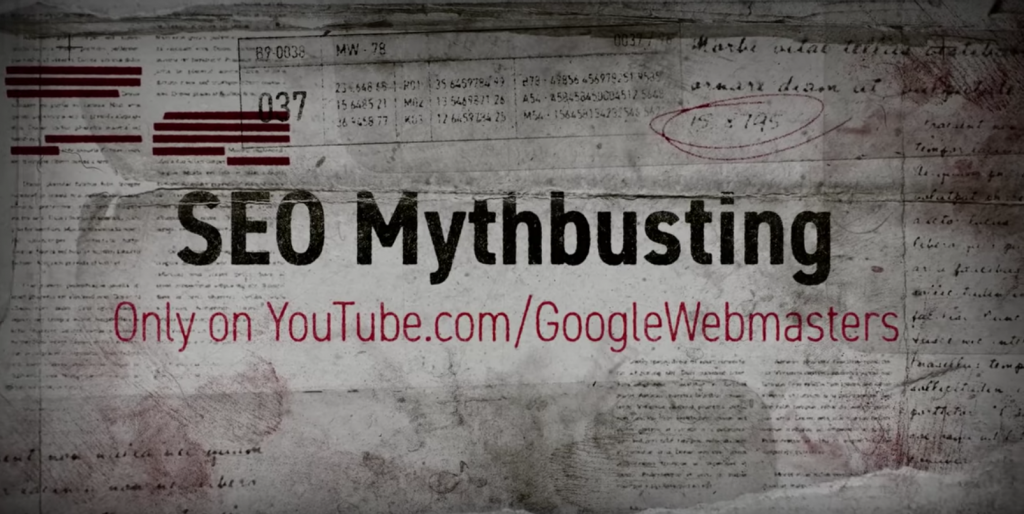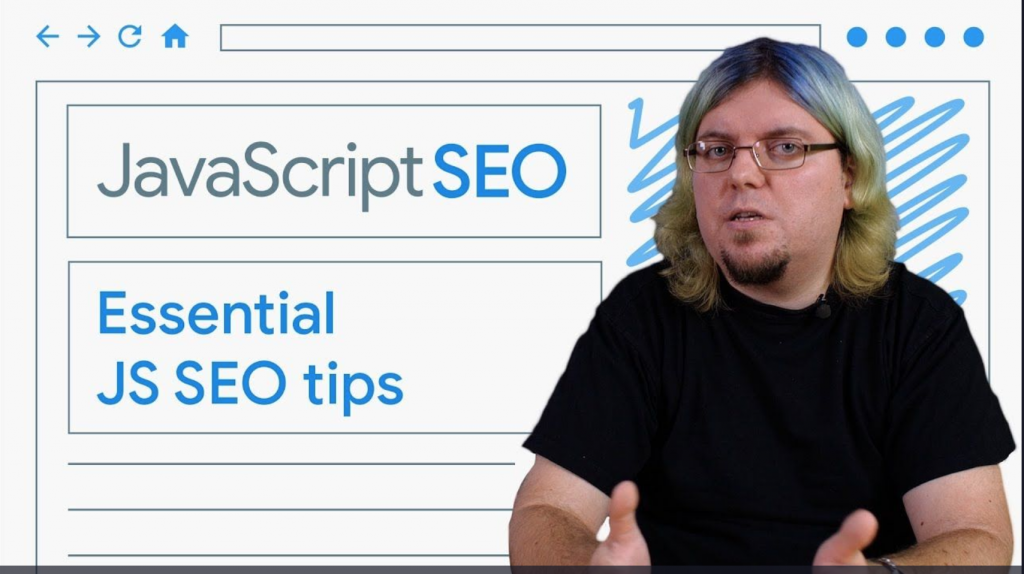Have you heard? Google is launching a new video series on YouTube that’s aiming to bust open common myths about SEO…and its free, and available to anyone with access to YouTube. The series is hosted by Google’s own Martin Splitt, and it will be published on the Google Webmasters YouTube channel. They’re already on their second episode, so if you haven’t hit “subscribe” yet, I suggest you do it quickly so you don’t miss any future videos. But if you don’t have time to watch the series, you’re in luck- we’re going to summarize each episode so you get the key points without having to sit through the (sometimes) bad jokes or unfamiliar terminology (what’s a “popper” anyway and what does it have to do with cute dogs?).
The first episode, entitled “SEO Mythbusting 101” was published only a week ago and has already garnered over 23 thousand views. SEO is a huge part of digital marketing, and it seems that lately everyone wants to be an expert. It’s true that if you understand SEO you can make great leaps to grow your business without having to be beholden to an SEO company (and their huge bills), but it takes time and dedication to truly understand the field of search engine optimization. It doesn’t help that the field is constantly changing, and so the strategies that worked 5 years ago aren’t necessarily applicable today. That’s where some of these “SEO myths” come into play; what should we believe, what’s outdated information, and what’s a straight-up falcity?
In this first episode of SEO Mythbusting, Splitt sits down with Juan Herrera (Angular GDE, Web Developer at Parkside) to discuss the basics of SEO, such as:
- What is a search engine?
- What is crawling?
- How does Google determine which search results are relevant for which users?
- What are the top 3 things I should do to make my website discoverable?
- Why is it important for a website to appear in the top search results?
So let’s get down to it!
What is a search engine? (according to Splitt and Google)
“A search engine is a platform of service, or program, that basically goes through the Internet content and tries to catalog it.”
Splitt likens search engines to going to the library and asking the librarian for a specific book; you don’t have to go through all the books in the library to find it, she or he just hands you the right one. (In case you couldn’t tell, search engines are the librarian in this example.)
Search engines find the right content for your purpose. How do they do this? By crawling.
So what is crawling?
The term crawling is used to describe what search engines are doing when they search for content. They start on one page, at one URL, and follow links to different pages to find what they’re looking for. They’re essentially “crawling” through all the links and pages on the internet.
Once they’ve found the pages they’re looking for, they have to understand them and the content that’s on them. This is called indexing.
What is indexing?
Indexing is the process of categorizing all the websites and webpages on the Internet. The librarian can’t find the right book for you if she’s not familiar with all the books in the library, right?
When you type a keyword into a search engine, such as “ice cream”, the search engine looks into their index to find the page(s) that serve your purpose perfectly, or as close to perfect as they can find. They rank these pages higher than the others, and they’re listed accordingly.
So how do they decide what pages best relate to your search query? They look at signals, such as:
- title
- meta description
- content on page
- images
- links
You can optimize your website and ensure that it’s discoverable to a wide audience of users by focusing on optimizing those signals. But if you’re short on time, or you’re looking to make major changes quickly, you should focus on the following 3 things:
The top 3 things you should optimize to improve your ranking
1. Really good content that serves a purpose for users.
You need to create content that users both need and want. It should “serve the purpose of the people you want to attract, and the people you want to interact with your content”. Additionally, within your content you need to “speak the language” that your audience is using; branded keywords are great, but that might not be what people are searching for. Include more common keywords in your content and on your pages, such as Ice cream near [zip code] vs. “smooth cream ice cream 5000”.
2. Meta tags and descriptions
Don’t forget to include meta tags that describe your content; meta descriptions give you the ability to have snippets in the search results that set your business apart from the rest and let people find out which of the many results might fulfill their purpose best.
Also include descriptive page titles that are specific to the page that you’re serving. Don’t just use one blanket title for everything you do. Your titles should change with the content you’re showing.
3. Performance
Performance is about more than just making your website faster; it also helps the website become more visible, more discoverable, to others.
This is where the video gets a little bit technical; up until this point I think anyone with a basic knowledge of SEO would be able to follow along, but at this point if you’re not familiar with coding then you might get a little lost. But don’t fret- we’re here to steer you in the right direction.
When you create a website, it’s based on a framework of codes. Thankfully for those of us who aren’t into coding, sites like WordPress and Squarespace do the coding for us so all we have to worry about is the design template. And these “template websites” typically perform pretty well; but they come at a price. So if you want to save some money and you have the ability to build a site from the ground up, you need to think about your performance.
First things first: Not all bots read Javascript. Google does, but others don’t. If you’re site is already built with Javascript and you don’t want to deal with a bunch of code changes, you need to look into dynamic rendering. This will help your site get indexed and become more discoverable.
Hybrid rendering or server-side rendering are also good options to optimize your website performance by getting your content to your users faster.
Why is it so important for companies to rank in the top results?
It’s simple, really. You create a company, or a blog, or a website etc; you create it so people can use it, right? Well in order for them to use it, they have to know about it.
When users are searching for something to fulfill their purpose, such as “ice cream near me”, they’re not going to go to page 99 to find the answer. People trust search engines, so if Google shows them 5 ice cream businesses on their first page, they’re going to pick from one of those 5 businesses because they believe Google knows which websites are best.
Your business needs to be on that first page.
The Takeaway
Overall, we’re impressed with this first venture into debunking SEO myths. It was nice to have SEO explained in basic terms so that even those who are unfamiliar with the world of web development, marketing, coding, etc. can follow along and learn a thing or 2.
The webmasters say the next few episodes will dive more deeply into SEO topics, such as Javascript, web performance, frameworks, and more and we’ll be anxiously waiting to see if they truly debunk these myths or if the myth itself is that Google can create a truly insightful, accessible, SEO talkshow.
Click here to watch and decide for yourself!
feature image credit: Youtube.com
image 1: youtube.com
image 2: youtube.com
image 3: twitter.com




